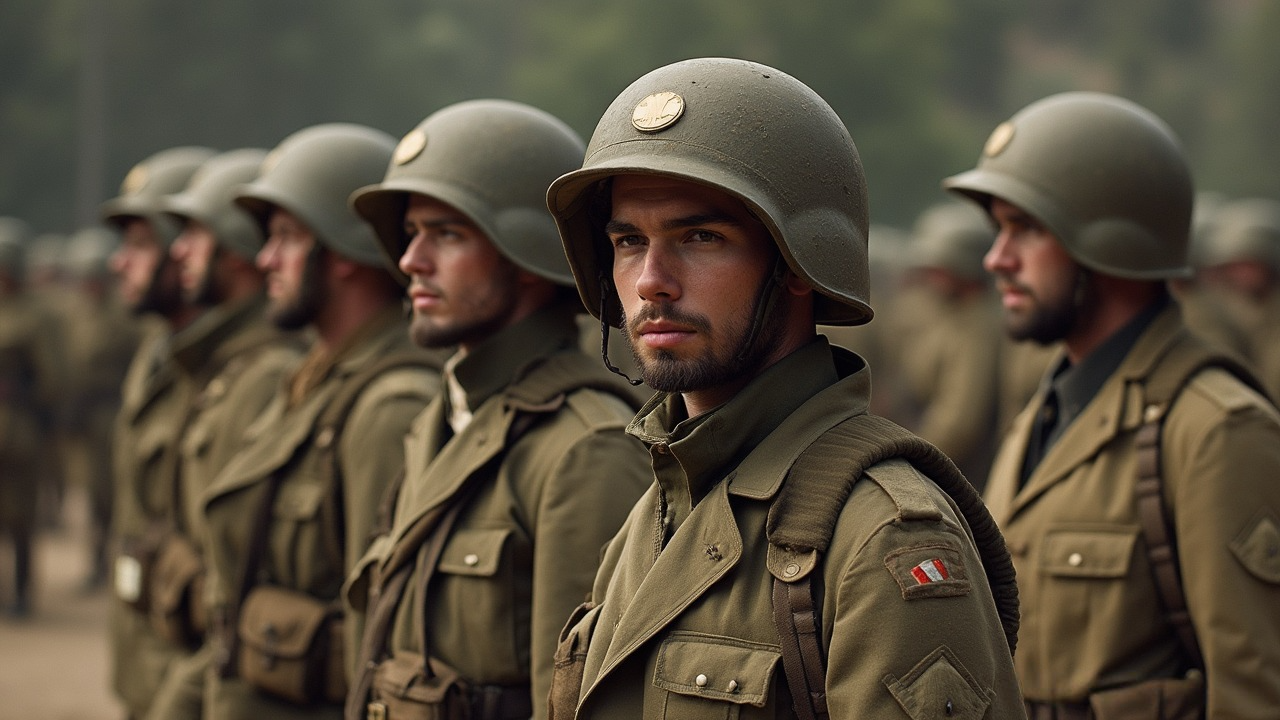
Exploring WWI US AEF Uniforms: A Glimpse into the American Expeditionary Force Gear
Published on Dec 24, 2024
The uniforms and gear of the American Expeditionary Force (AEF) during World War I hold a special place in history, showcasing the resilience and dedication of Doughboys who served on the frontlines. For collectors, reenactors, and history enthusiasts, WWI US AEF uniforms offer a tangible connection to the past. This blog delves into the fascinating world of US Army World War I uniforms, authentic WWI US gear, and the legacy of these remarkable pieces of history.
Key Features of WWI US AEF Uniforms
WWI US AEF uniforms were designed for functionality, durability, and practicality. Here are some notable elements that defined these uniforms:
- Doughboy Uniforms: The standard-issue uniform for the American soldier, affectionately nicknamed "Doughboys," featured a woolen tunic and breeches, providing warmth and durability in the harsh conditions of trench warfare.
- Service Coat: Made of olive drab wool, the service coat was tailored to include four pockets for essential storage, reflecting the utilitarian needs of soldiers in combat.
- Leggings and Boots: Leather hobnailed boots, paired with canvas leggings, were standard gear to offer protection and mobility in rugged terrains.
- Headgear: The "Brodie helmet," also known as the "doughboy helmet," was issued to protect soldiers from shrapnel and other battlefield hazards.
Authentic WWI US Gear
Collectors and reenactors seeking authentic WWI US gear often focus on the following items:
- Field Gear: Essential items like haversacks, canteens, mess kits, and entrenching tools were integral to a soldier’s survival kit. These items are now sought-after collectibles.
- Personal Effects: Items such as gas masks, pocket watches, and insignias provide insight into the daily lives of soldiers.
- Weaponry: Bayonets, rifles, and sidearms are key pieces for reenactment or display, reflecting the technology and tactics of WWI combat.
American Expeditionary Force Gear: A Historical Perspective
The American Expeditionary Force, under General John J. Pershing, was instrumental in turning the tide of WWI. Their gear exemplified the evolving military strategies and the emphasis on equipping soldiers for prolonged campaigns in Europe.
- Gas Masks: With the advent of chemical warfare, the AEF prioritized gas masks to protect troops against mustard gas attacks.
- Trench Tools: Shovels, pickaxes, and wire cutters were issued for constructing defensive positions in the trenches.
- Communication Equipment: Field phones and signal flags were essential for maintaining communication in chaotic battlefields.
Doughboy Uniforms: Iconic and Collectible
Doughboy uniforms remain a symbol of American involvement in World War I. Key factors contributing to their collectible status include:
- Historical Significance: These uniforms represent a pivotal moment in American military history.
- Rarity: Authentic pieces from WWI are increasingly scarce, making them highly prized among collectors.
- Cultural Impact: Doughboys were immortalized in literature, art, and film, further cementing their place in history.
WWI Reenactment Equipment
Reenactors aim to accurately portray WWI soldiers, requiring meticulously crafted WWI reenactment equipment. Popular items include:
- Replica Uniforms: High-quality reproductions of WWI US AEF uniforms allow reenactors to authentically represent Doughboys.
- Accurate Accessories: From belts to insignias, every detail matters to ensure historical accuracy.
- Field Gear: Reenactors often carry replica haversacks, canteens, and trench tools to complete their portrayal.
Preserving the Legacy of US Army World War I Uniforms
The preservation of US Army World War I uniforms and gear is essential to understanding the sacrifices and experiences of the American Expeditionary Force. Museums, collectors, and enthusiasts play a critical role in:
- Conservation Efforts: Protecting these artifacts from deterioration ensures their longevity for future generations.
- Educational Initiatives: Exhibits and reenactments bring history to life, fostering a deeper appreciation for the AEF's contributions.
- Community Building: Collectors and reenactors often collaborate to share knowledge and resources, enriching the historical narrative.
Tips for Collecting Authentic WWI US Gear
If you’re interested in building a collection of WWI US military collectibles, keep these tips in mind:
- Research Thoroughly: Familiarize yourself with the specifics of WWI US AEF uniforms to identify authentic pieces.
- Verify Provenance: Ensure the item's history is documented to confirm its authenticity.
- Condition Matters: Look for gear in good condition, as restoration can diminish historical value.
- Join Communities: Engage with forums, reenactment groups, and collectors' societies to expand your network and knowledge.
Conclusion
WWI US AEF uniforms and gear offer a captivating glimpse into the past, honoring the legacy of the Doughboys who served in one of history's most transformative conflicts. Whether you’re a collector, reenactor, or history enthusiast, exploring these artifacts allows you to connect with a bygone era and preserve the stories of bravery and sacrifice.
For a comprehensive selection of US WWI field gear, authentic WWI US gear, and high-quality replicas, visit Paddelaters.com.
